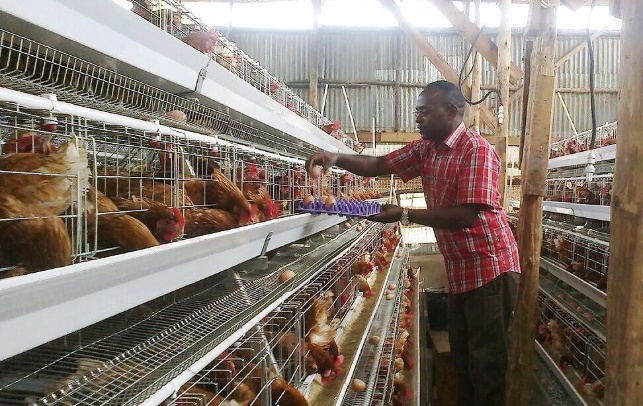Automated chicken cage system improves poultry efficiency
2024-05-14
In poultry farming, the adoption of automation technology is becoming increasingly common, ushering in an era of improved efficiency, productivity and animal welfare. Automated chicken house systems are at the forefront of this technological revolution, designed to simplify poultry management while safeguarding bird health.
Let’s take a closer look at the transformative impact of these innovative systems and their role in shaping the future of poultry farming.
Embracing Automation: The Advantages of Automatic Chicken Cage Systems
Introduction to Automatic Chicken Cage Systems
Automatic chicken cage systems represent a paradigm shift in poultry farming practices, offering a fully integrated solution for housing, feeding, and monitoring poultry populations. These systems leverage cutting-edge automation technologies to optimize resource utilization, minimize labor requirements, and promote a conducive environment for poultry growth and development.

Key Features and Benefits
- Precision Feeding: Automatic chicken coop systems feature automatic feeding mechanisms that provide precise portions of feed to each chicken, ensuring optimal nutrition and minimizing waste.
- Efficient Waste Management: With built-in waste removal systems, these cage systems effectively manage poultry waste, reducing the risk of contamination and improving overall hygiene within the poultry facility.
- Remote Monitoring and Control: Through advanced sensors and connectivity features, poultry farmers can remotely monitor and control various aspects of the chicken cage system, such as temperature, humidity, and ventilation, ensuring optimal conditions for poultry health and comfort.
- Space Optimization: Automated chicken cage systems are designed to maximize the use of space within poultry housing facilities, allowing for higher stocking densities without compromising on bird welfare or comfort.
Safeguarding Poultry Health and Well-being
Biosecurity Enhancement
Automatic chicken cage systems play a crucial role in enhancing biosecurity measures within poultry farms by minimizing human contact with the birds and reducing the risk of disease transmission. With automated feeding and waste management systems, the potential for contamination and disease spread is significantly mitigated, safeguarding the health of the poultry flock.
Stress Reduction
By providing a controlled and comfortable environment, automatic chicken cage systems help alleviate stress among poultry populations, promoting healthier growth and higher productivity levels. The automated nature of these systems reduces disturbances and disruptions, allowing birds to thrive in a more tranquil and conducive environment.
Embracing Sustainable and Responsible Poultry Farming Practices
As the global demand for poultry products continues to rise, it is imperative for poultry farmers to embrace sustainable and responsible farming practices that prioritize animal welfare, environmental stewardship, and operational efficiency. Automatic chicken cage systems exemplify this commitment by offering a holistic solution that addresses the diverse needs and challenges of modern poultry farming.
Conclusion: Paving the Way for a Brighter Future
In summary, automated chicken cage systems represent a cornerstone of innovation and progress in the poultry farming industry, providing a variety of benefits, from increased efficiency and productivity to improved animal welfare and biosecurity.
By adopting these advanced technologies, poultry farmers can move their operations into the future, ensuring sustainable growth, profitability and success in poultry farming. Let us advocate the adoption of automated chicken cage systems and strive to build a more humane, efficient and sustainable poultry farming ecosystem.


 English
English








